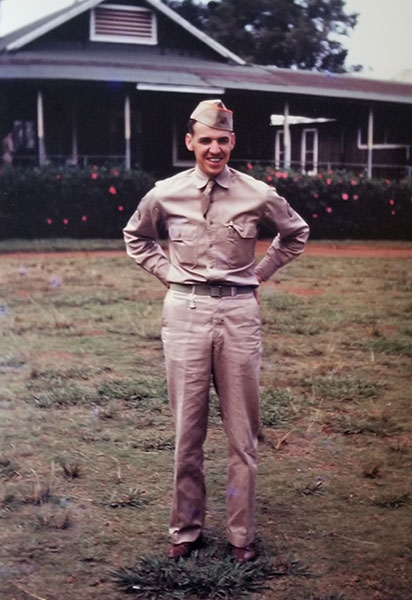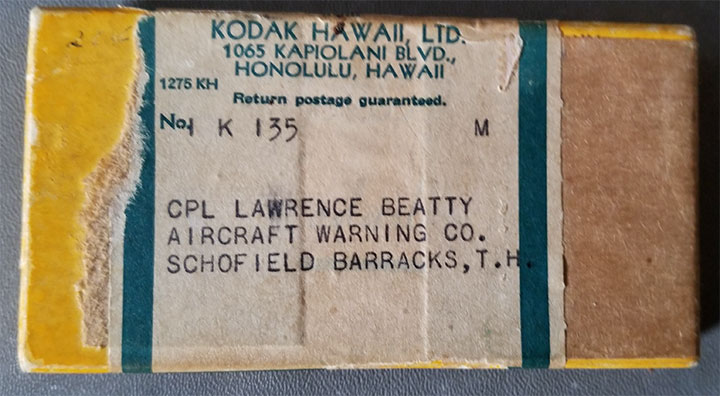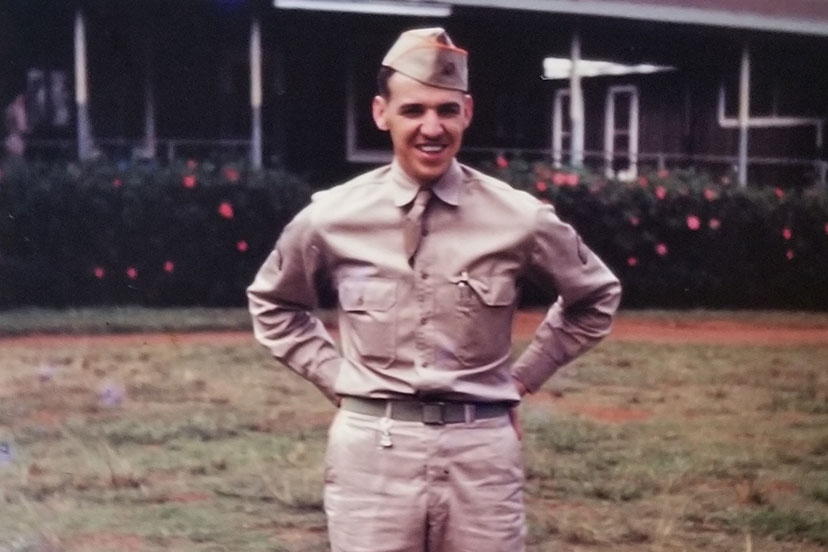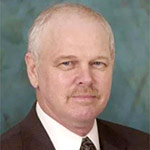Today, December 7, 2021, is the 80th anniversary of the “day that will live in infamy” — the Japanese attack on the Pacific Fleet at Pearl Harbor. So much has been written about that historic day, there’s almost nothing I can add.
Almost!
My father was a Pearl Harbor survivor, with a unique perspective on the event. Unique because he was assigned to the “Radar Warning Company”, then based a Camp Kawela at the base of Opana Mountain on the Island of Oahu and was on duty that fateful morning.
Like most of us from the boomer generation whose fathers were WWII veterans, I was aware my Dad was one. He’d married my mother, and English war bride, when he was based there awaiting the invasion of Europe. As a young child, I once saw Dad in his old Army captain’s uniform. He and my mom were going to a VFW affair.
I knew he was a Pearl Harbor survivor. What I didn’t know until shortly before his death, at age 90, was his role in that historic episode.

Dad was, like so many WWII vets, reticent to talk about his war experiences. All I knew growing up was that after Pearl Harbor, he went to England, and that he had served in France in command of an engineer company building bridges. That somehow while in France he injured his back, which bothered him the rest of his life, and for which he received care from the VA. But beyond that, he never spoke to me of what he’d done.
He would never watch WWII movies, except those with John Wayne because …. well, I mean, c’mon, we are talking about John Wayne. If ‘The Duke’ was in a movie when I was growing up, we went to see it. The only other exception I knew about was “Patton” in 1970. Dad went to see that because (I learned for the first time) he had served under Patton, and once talked to him. The story, according to my dad was this:
Dad was called to Patton’s HQ where the man himself spoke briefly to Dad about bridge building, because the Germans were blowing up every one they could in their retreat. Patton asked Dad how fast he could build a bridge, to which Dad replied it depended on how wide the river was, and whether they were under fire at the time. Patton replied, that he didn’t “give a damn” how long it takes as long as there is one for him to drive across when he got there.
Dad said he never forgot that episode because Patton looked him directly in the eye with the “hardest damn look I’d ever seen”. Dad said he made sure there was always a bridge ready for Patton. Dad thought Patton was an “SOB” for slapping a soldier, but despite that, considered Patton was, after Ike and Omar Bradley, the best General in the American Army.
But three years before meeting Patton, Dad was a Corporal on duty at the command post of the Army “Aircraft Warning Company” in Camp Kawela in Hawaii on December 7, 1941. Which I never knew until not long before he died – and then only found out by accident.
Dad’s last couple of years were spent in an assisted living facility. While visiting him once we went into the facility lounge for dad to socialize with a group of WWII vets living there. Being a vet myself, they invited me to join them, an invitation I couldn’t refuse. It was a unique opportunity to hear living history.
Like conversations among vets of all wars, there were the usual ‘war stories’. My own experience with such renditions is that you can tell the difference between a fairy tale, and a war story this way: A fairy tale begins “Once upon a time”, and war story begins “ No s!@#, this really happened!” But mixed in with the war stories were serious observations from men who had lived through some historic experiences. The conversation got around to whether FDR knew about the attack on Pearl Harbor in advance, and let it happen to get us into the war. One of them pointed out that the Japanese planes were spotted on radar and ignored.
They discussed the well-known story about the radar, and Dad got silent. One of the others said, “Larry, you’re a Pearl Harbor survivor. What do you think?”
He simply replied, “That’s not how it happened.”
Then and there for the first time, and it turns out only time, I heard Dad talk about his experience on the morning of December 7, 1941. I learned for the first time that he was a member of the Aircraft Warning Company that operated the radar site which spotted the Japanese planes.
Here is what appears on page 66 of The Report of the Joint Committee on the Investigation of the Attack on Pearl Harbor (the ‘Roberts Commission’):
The second indication of an attack came at approximately 7:02am, December 7, when an Army mobile radar unit detected a large number of planes approaching Oahu at a distance of 132 miles from 3° east of north. These planes were the Japanese attacking force. The aircraft warning information center, which closed down at 7am on the morning of December 7, was advised of the approaching planes at 7:20am. An Army lieutenant, whose tour of duty at the information center was for training and observation and continued until 8am, took the call and instructed the radar operators in effect to “forget it.” His estimate of the situation appears to have been occasioned by reason of a feeling that the detected flight was either a naval patrol, a flight of Hickam Field bombers, or possibly some B-17’s from the mainland that were scheduled to arrive at Hawaii on December 7.
You can read the version that appears on the Pearl Harbor web site, here.
Dad was interviewed by investigators from the ‘Roberts Commission’. This is Dad’s 2007 recollection of what he told the Commission in 1946:
As the corporal on duty in the Camp Kawela HQ, he drove Pvts Elliott and Lockard up to the radar site at about 0400 that morning. Dropped them off and returned to the company HQ.
A while later (he doesn’t remember how long) Elliott called the HQ, spoke to Dad, and said there was something “strange” on radar they didn’t recognize. Dad told Elliott to call Fort Shafter and report whatever they saw.
According to Dad, the next he heard from Elliott was when he called the Kawela HQ for a ride back to get breakfast. Dad picked them up at the site, and brought them back to the HQ. On the drive back, Elliott advised Dad that Fort Shafter had told him to ignore whatever they were seeing on the radar.
Dad said that to the amusement of the rest of the Company, Lockard was portrayed in the newspapers as one of the “heroes” of the day. I asked Dad why that was amusing, and all he would say is, “Hey, you were in the military. Who pulls duty at 0600 on a Sunday morning? Not the best troops!”
As the Army rapidly expanded for the war, Dad became an officer. Because of his instruction to Elliott to call Fort Shafter, Dad was deemed “officer material” and sent to Officer Candidate School. He eventually ended up commanding that bridge building company under Patton. Dad said when the two commanders of the forces in Hawaii — Navy Admiral Kimmel, and Army General Short — were made the scapegoats for Pearl Harbor, it was the first time in his life he began to distrust the US government. In 1999, Kimmel and Short were exonerated, and the blame placed where it belonged: the upper command in Washington DC.
That conversation with Dad and the other of vets occurred a couple of months before he died in October 2007. During that time he had terminal cancer, so I never got another opportunity to ask him about Pearl Harbor. After he died, while going through his belongings, I struck gold.
Among his stuff was a box of Kodachrome slides which he had received back from the developer, dated September 5, 1941.

The slides are of Dad, Camp Kawela, and some other members of the Aircraft Warning Company. Elliott or Lockard may be among them. But because Dad never mentioned having those slides, and I only discovered them after his death, he can’t tell me who is in them.
I got the slides converted to photos at a local photography shop. The owner, it turned out, was a collector of WWII photos, and asked how much I’d take for the original slides. I told him they aren’t for sale, and still have them. Someday I’ll make it to the WWII museum in New Orleans and donate them.
Eighty years ago today, it was a “day that will live in infamy.”


